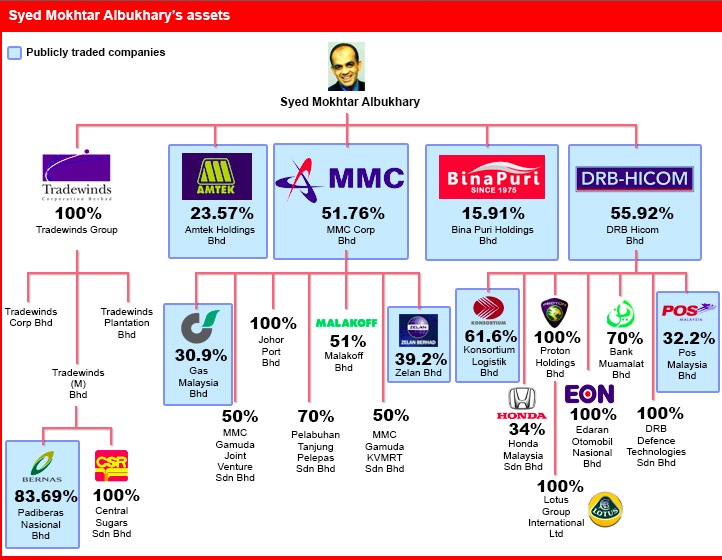Mahathir wants Malaysians to eat cars

It is very dangerous for a country to have a prime minister who thinks like that. The first thing a prime minister should be thinking about is how to feed the people. If the country produces only 30-70% of its food requirements, like Malaysia, that is putting the population at great risk. And the fact that Malaysia has been independent for 61 years and is still not self-sufficient in food production is criminal.
NO HOLDS BARRED
Raja Petra Kamarudin
Tun Dr Mahathir Mohamad tidak kisah sekiranya rakyat Malaysia menolak projek kereta nasional ketiga dan mahu meneruskan aktiviti tanaman padi dan tangkapan ikan.
“Don’t have any industries because industries sometimes lose money, you see? Let’s be padi farmers or fishermen. That’s all we can be. If you like, if that’s what you voted for, okay, we’ll do that.”
That was what Tun Dr Mahathir Mohamad said today in response to those who are opposed to his third national car. The way Mahathir put it, being a farmer or fisherman is akin to being a pariah. It is something shameful.
It is very dangerous for a country to have a prime minister who thinks like that. The first thing a prime minister should be thinking about is how to feed the people. If the country produces only 30-70% of its food requirements, like Malaysia, that is putting the population at great risk. And the fact that Malaysia has been independent for 61 years and is still not self-sufficient in food production is criminal.

Since Merdeka, the problem with Malaysia is we do not produce enough food. Everything that we need is imported. And when LPN (which was later changed to BERNAS) was set up, they focused mainly on importing rice (because they made more money selling APs) than on the rice self-sufficiency program (which was the purpose for setting up LPN in the first place: rice self-sufficiency).
Malaysia was supposed to be self-sufficient in rice production a few decades ago (when Mahathir was Prime Minister) but until today we are still not. And a report submitted to the cabinet back in the 1990s (when Mahathir was Prime Minister) was that if war breaks out or if there is any serious problem in rice production in our suppliers’ country, then Malaysians will have to go back to eating ubi kayu (tapioca) like during the Japanese Occupation in WWII.
It was the then Trade Minister Rafidah Aziz who grumbled that Malaysia does not produce enough food. Everything we eat is imported, said Rafidah. Rafidah argued, while industrialisation may be good, we cannot eat cars so Malaysia needs to balance between industrialisation and agriculture.
Yes, maybe Rafidah should be appointed as a member of the Council of Eminent Persons (CEP) to advise the government to stress more on agriculture and food production so that Malaysia’s 32 million population can be fed and the country does not need to depend on imports to feed its people. If you leave it to Mahathir, he wants to produce more cars and less food.

For 61 years Malaysia has had to depend on imports to feed its people and it keeps increasing every year
This was what The Star reported on 15th March 2015:
Malaysia is still heavily reliant on imports to feed the population, despite efforts to be more self-sustainable in the near future. Agriculture and Agro-Based Industry Minister Datuk Seri Ahmad Shabery Cheek said Malaysia’s food import bill was RM45.39bil last year. “In the same year, our food export was only RM27bil, so the efforts to reduce the RM18bil deficit is a huge responsibility for the Government.”
Malaysian Reserve had this to say on 27th September 2017:
Malaysia will continue to depend on rice imports as the country’s production of the grain is nearly 30% short from the three million metric tonnes (MT) self-sufficiency level (SSL).
Agriculture and Agro-based Industry Minister Datuk Seri Ahmad Shabery Cheek said the industry is expected to narrow the SSL gap from 72% presently to 80%, but the country will remain dependent on other countries for its rice supplies.
He said the industry has to cope with the rising population and demands, ageing farmers, pest attacks and harvesting process inefficiencies.

These Thai boats catch the fish off the Malaysian coast in the South China Sea and then export the fish to Malaysia by road through the Malaysian-Thai border
On 25th April 2018, The Edge Markets reported:
The US Department of Agriculture (USDA) said Malaysia rice imports are forecasted to drop 10% to 900,000 tonnes in 2018 from one million tonnes in 2017 as the government reduces ending stocks to 400,000 tonnes in 2018 from 480,000 tonnes in the previous year.
In its Grain and Feed Annual 2018 report, the USDA said Malaysia rice imports are seen improving to 950,000 tonnes in 2019 as the government needs to replenish ending stocks to 380,000 tonnes.
“There will be no increase in planted areas, and the increase in imports is in line with projected population growth of 3% annually from 2018 to 2020. Increasing urbanites that switch from traditional local rice breakfast (nasi lemak) to a healthier breakfast such as cereal and bread lead to less consumption of rice.
For 2017, the USDA said Thailand and Vietnam supplied more than 80% of rice imported into Malaysia with total volume of 630,000 tonnes. Other major exporters of rice to Malaysia were Cambodia, Pakistan and India.

The rice import business is a cash cow for Mahathir’s cronies and because of that Malaysia is still not self-sufficient in rice production
Malaysia has been independent for 61 years. And yet we still need to import 30% of our rice and fish requirements and up to 70% for some other types of food products. While the figures show that Malaysia also exports food, for example fish, the reality is Malaysia exports the higher quality fish and imports the lower quality fish for local consumption. For example, the higher quality fish that is caught in, say, Terengganu is exported to Singapore (or Kuala Lumpur) while the lower quality fish for the locals to eat is imported into Terengganu from Thailand.
So, one thing to note here would be, the figures of RM45 billion food imports versus RM27 billion food exports is misleading. In terms of value the deficit may appear only RM18 billion more imports over exports. But since we export high-priced food products and import low-priced food products, the gap between imports and exports is even larger than what we think.
For 61 years Malaysia has never been able to meet its food consumption requirements. People like Mahathir look down on fishermen and farmers and idolise industrialists. The number of people facing acute malnutrition, severe hunger and risk death all over the world is 100 million. In 1961, an estimated 30 million Chinese died in the Great Famine, almost the size of Malaysia’s population.
All it takes is one catastrophe to create a food shortage in Malaysia. And if Thailand, Vietnam, China and those other countries supplying Malaysia food stop exporting food to Malaysia, many Malaysians are going to starve. But then most Malaysians feel this is never going to happen, until it does.

Mahathir crony Syed Mokhtar controls the rice that Malaysians eat


